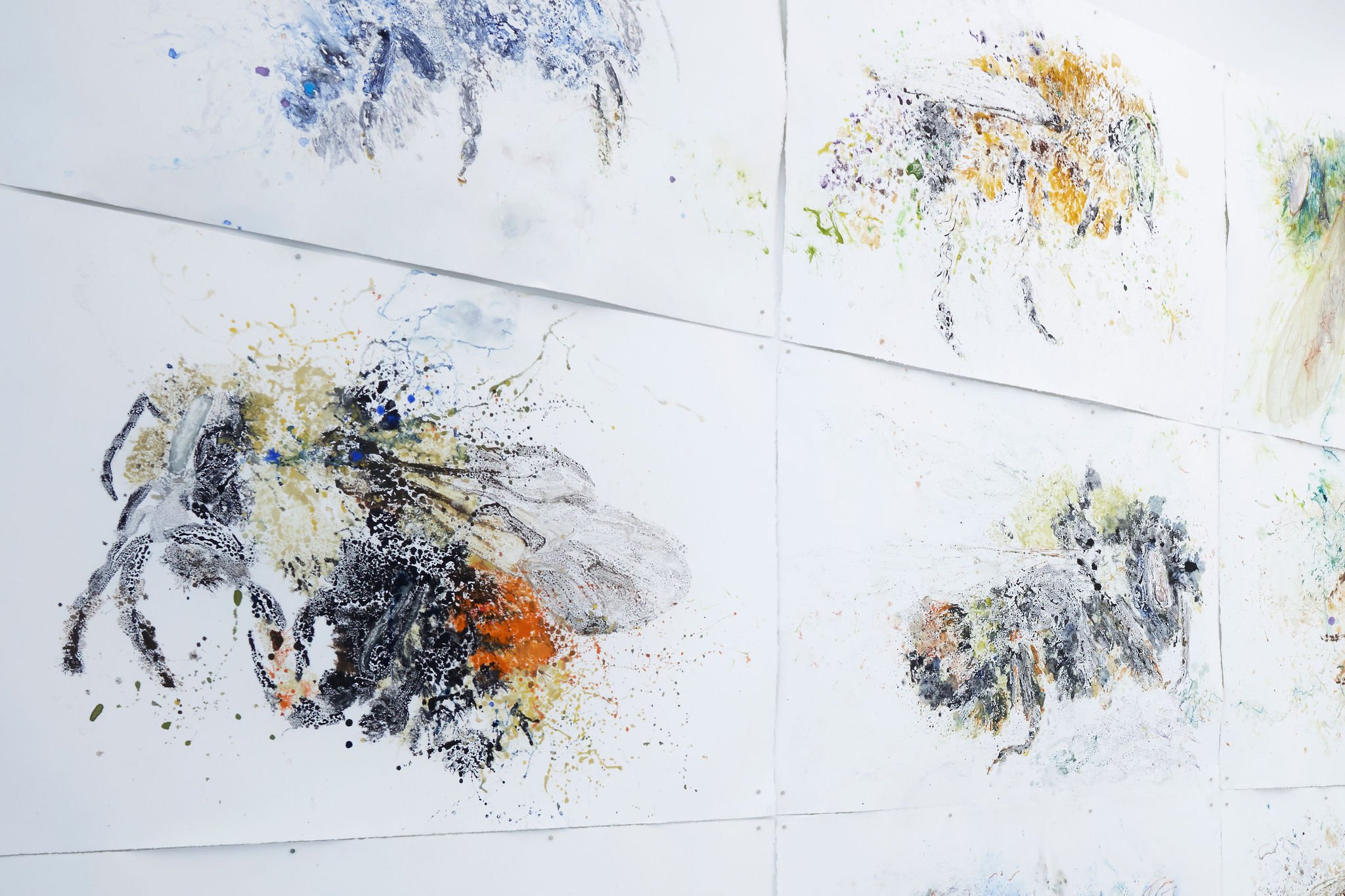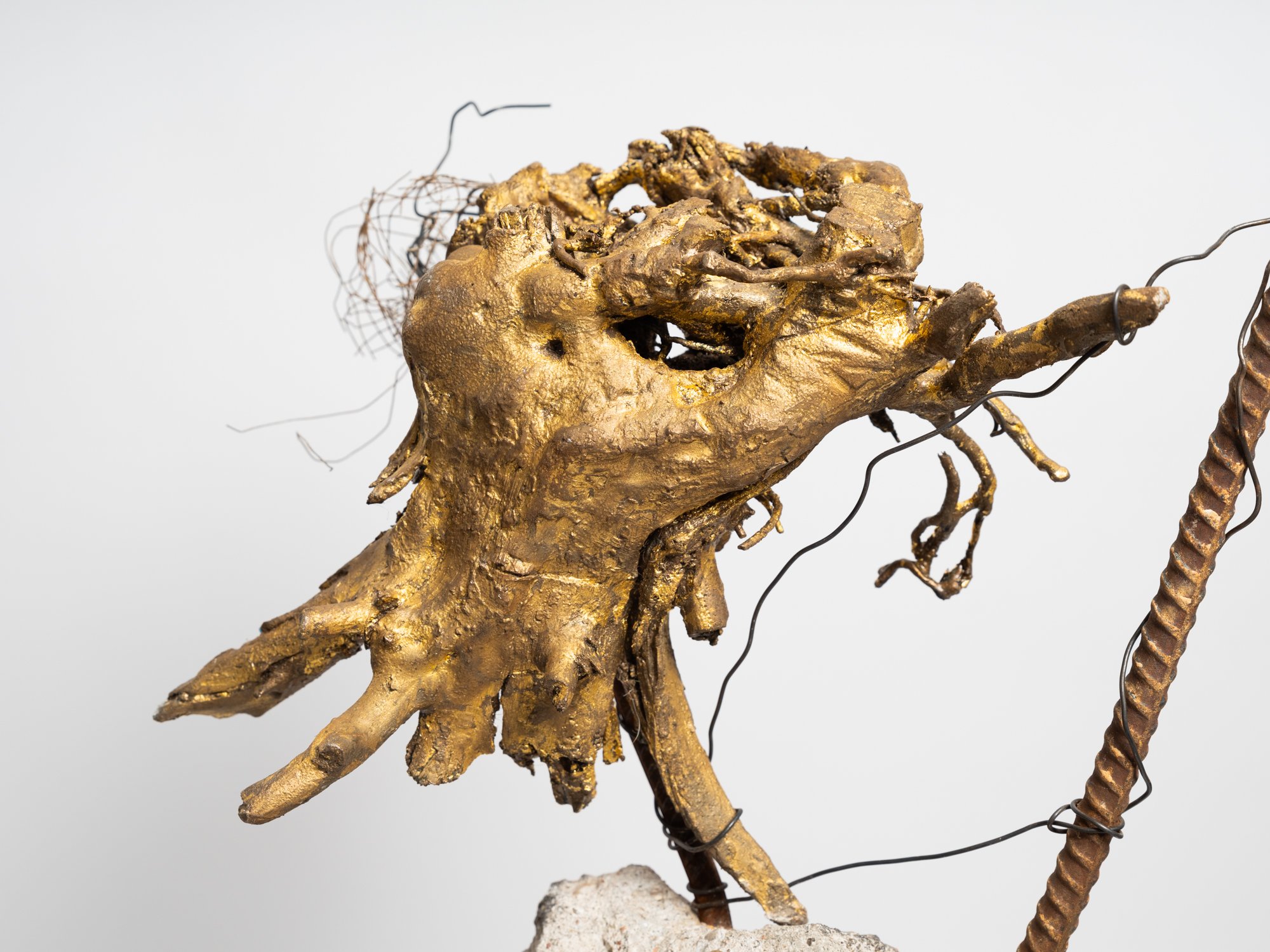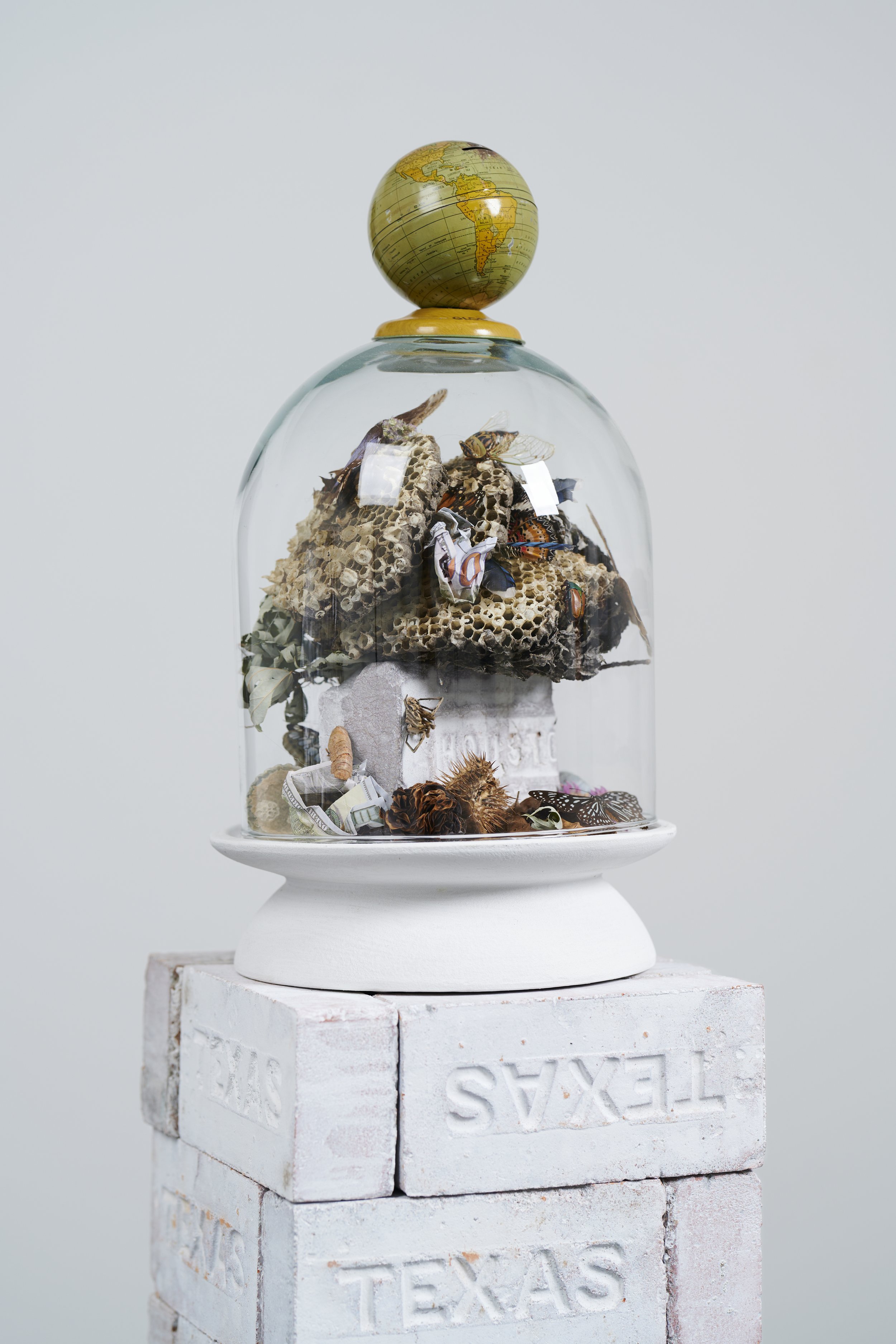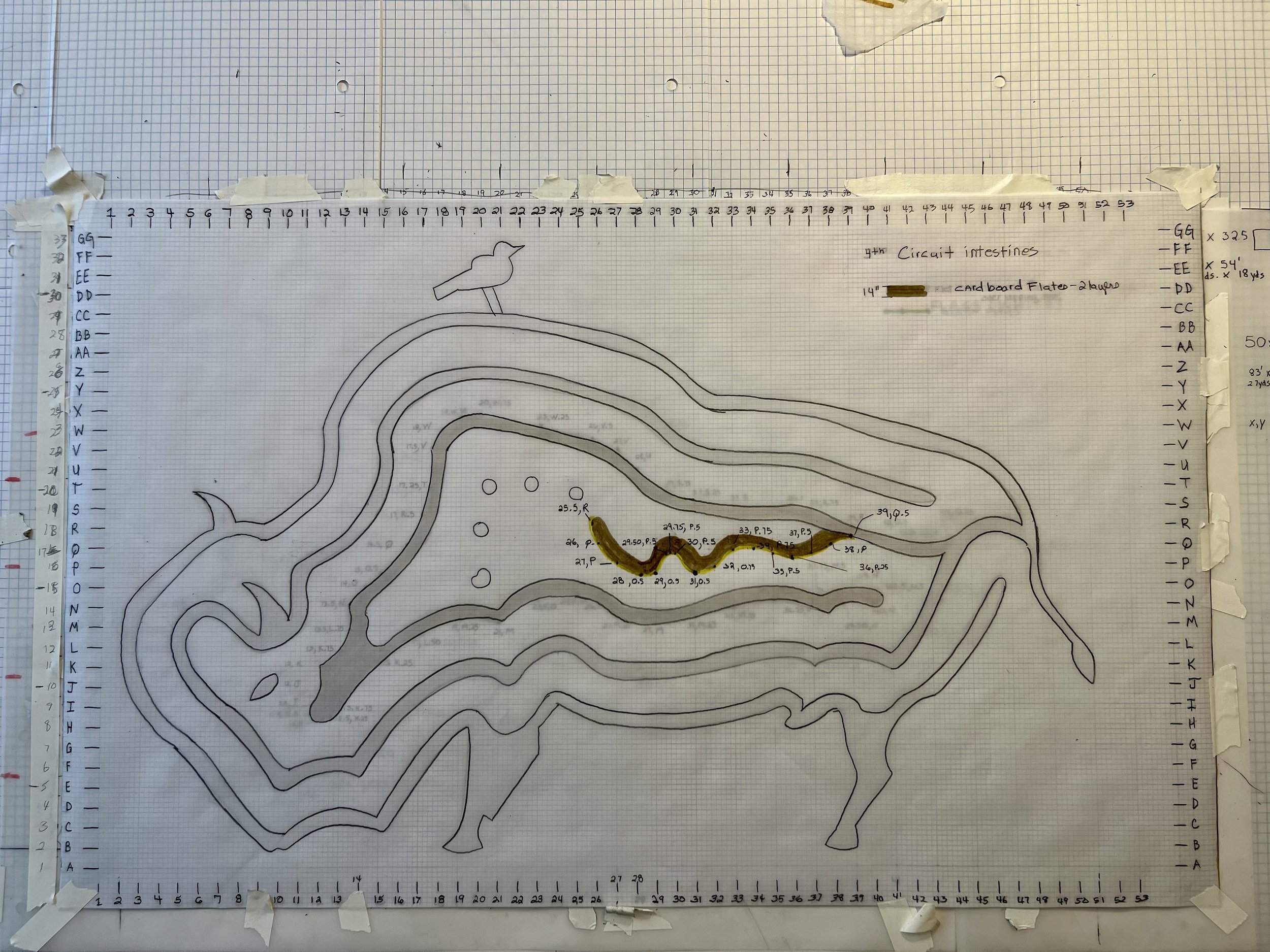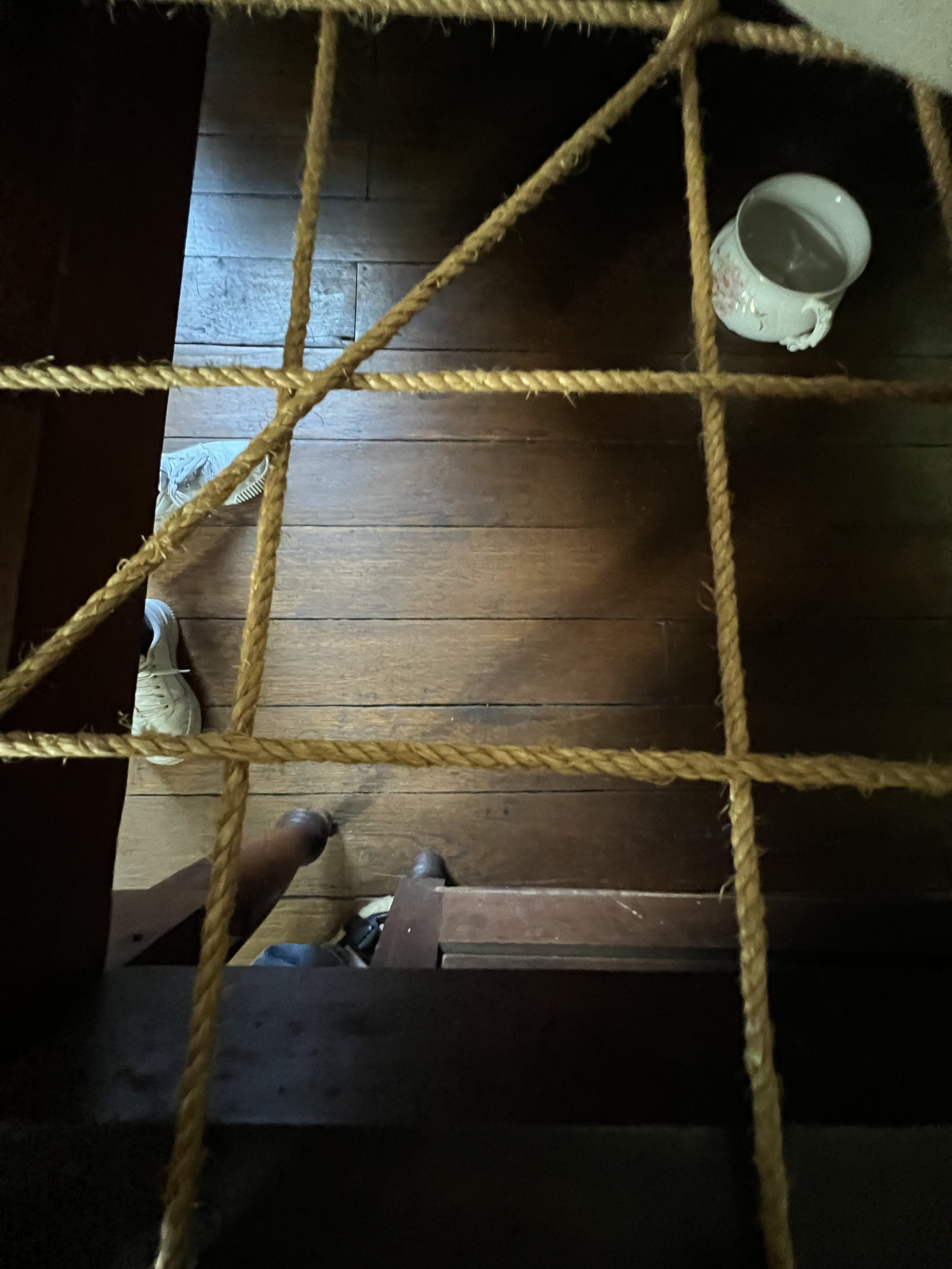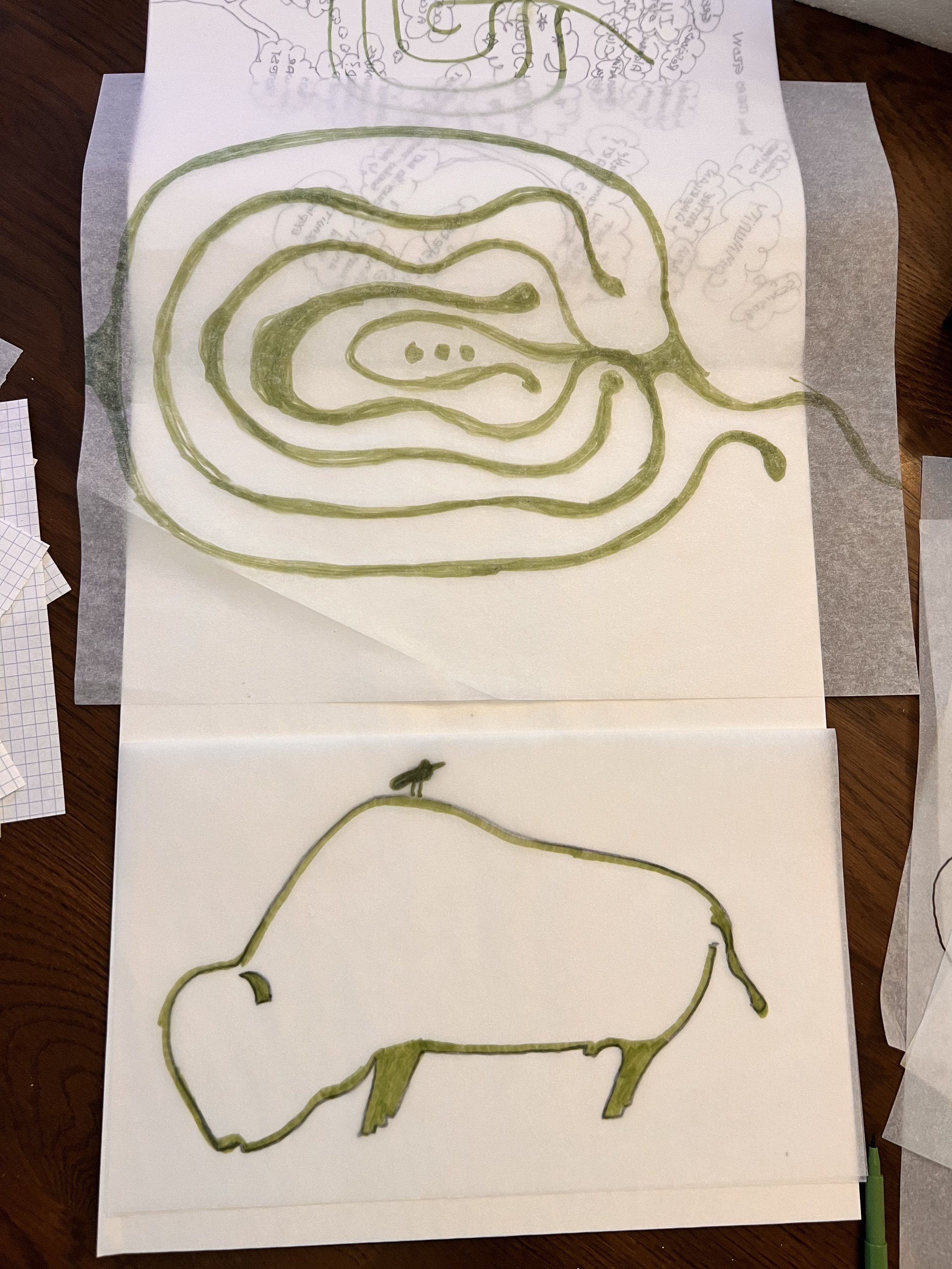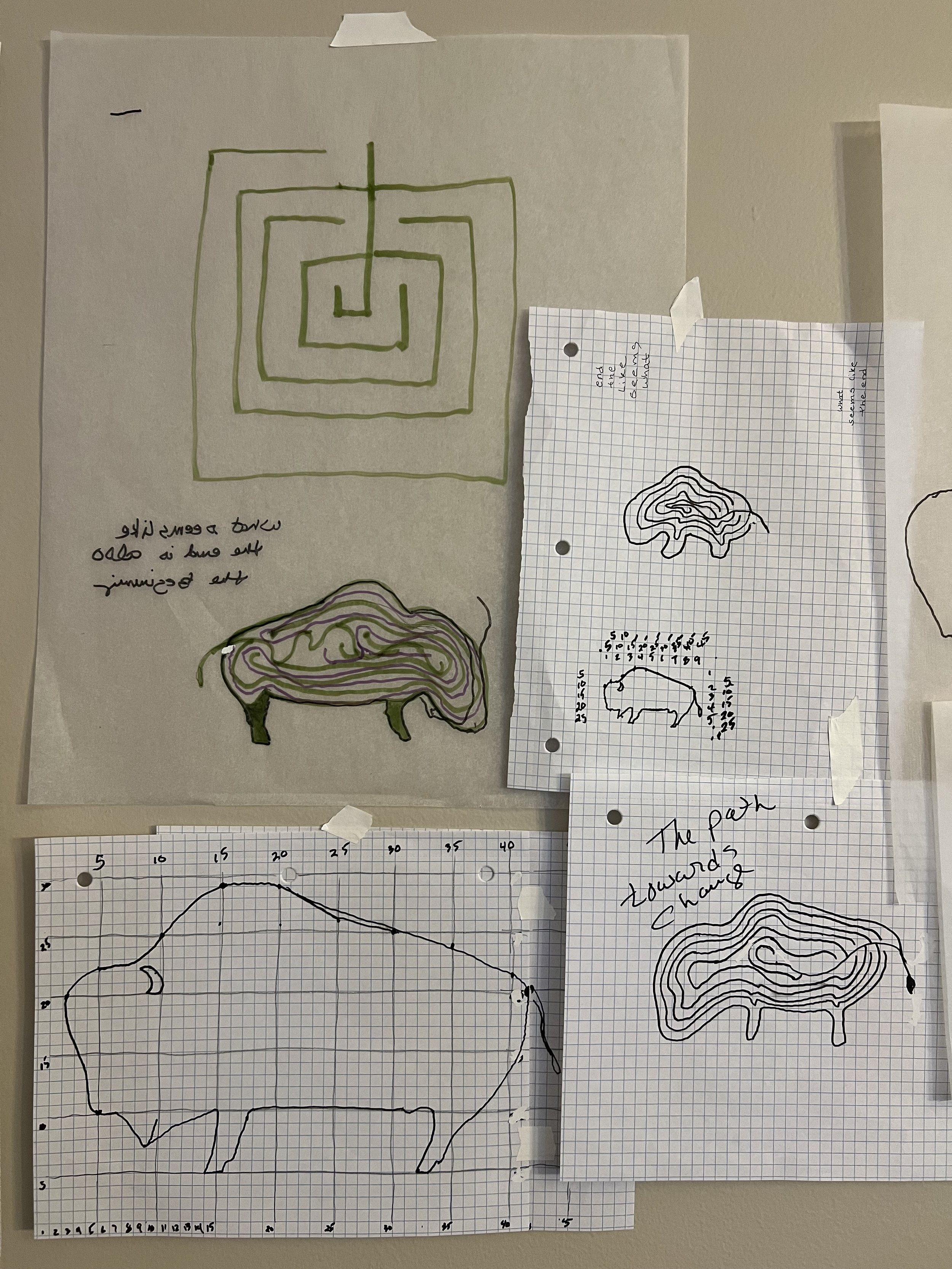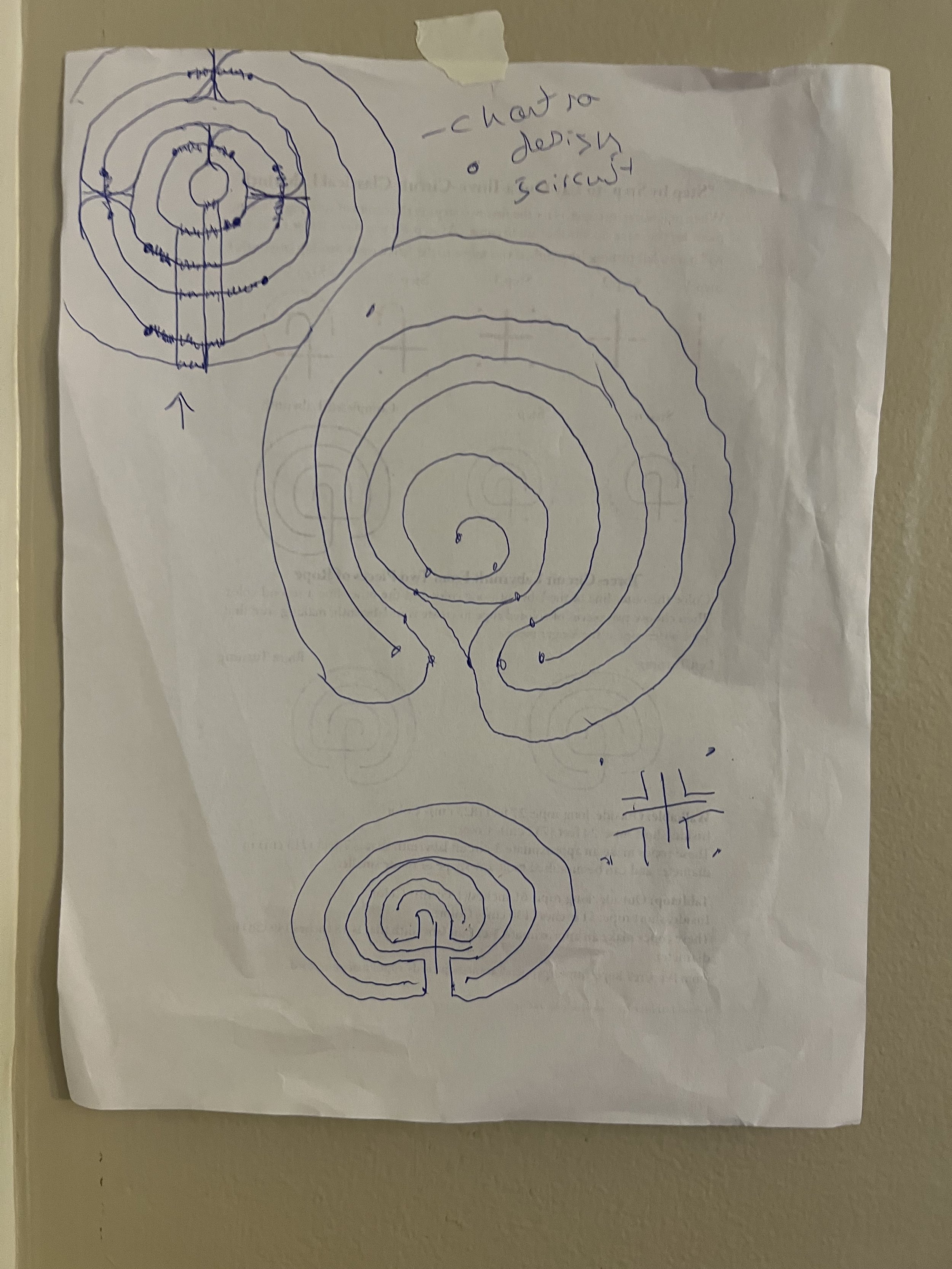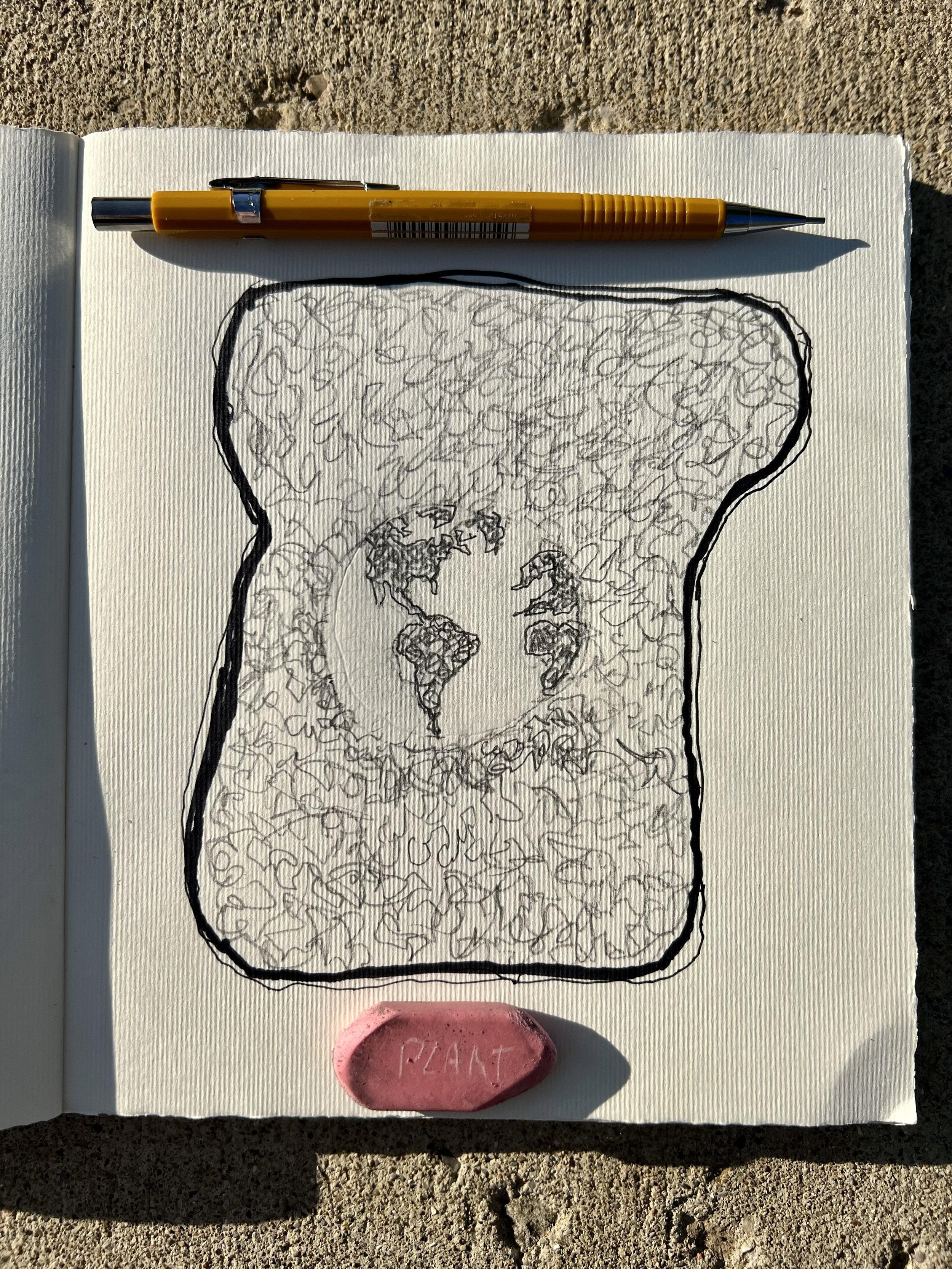When you understand the natural systems that regenerate our planet, you understand that snow is both an end and a beginning. Tobi, my Labrador, and I could not wait to check on our plant beings in “Deeper than that” this snow-covered morning. Scanning the installation there are bushy snow puddles of Butter daisies and Bluemist flowers with tiny bursts of color saved only for those who care to listen closely.
Layered in the dust of the morning’s snow the blanket flower draws us closest. The fiery blooms not reaching for the sun but in a motherly huddle. I am grateful that I don’t need to spend money, time, or energy on covering native plants that are genetically designed to thrive in extreme temperatures and weather conditions. The exposed plants create a subtle palette of earth tones rarely seen in urban landscapes, showcasing the various stages of life and regeneration that these resilient species represent. When my eyes focus on the details, hidden colors are revealed, and my brain receives a surge of oxytocin. I understand what hope feels like. As l scan down the street I see homes lined not in winters pallets but boxshrubs wrapped like mummies. For a moment I invision those mummies milting into a street lined with nature’s gentle winter lessons. I image things to inspire children to explore and capture their imagination.
In the quiet of the snow, I reflect on its form—a white-covered blanket—and its relationship with a planet that naturally regenerates for future generations. I consider how the plants that freeze back or remain in place become energy sources and habitats, supporting the foundation of the planet’s food network. It warms my heart to think about how this snow-covered landscape protects the soil life that nourishes roots and promotes spring growth.
There are many lessons that humans can learn from a garden that embraces seasons, regenerates life and provides for a diversity of beings. Imagine how different the world would be if every child’s first classroom was a garden, or if all politicians had to maintain a healthy garden without the use of chemical inputs for four years before they could hold office. They would gain insights into networking and learn about symbiotic relationships in real life.














